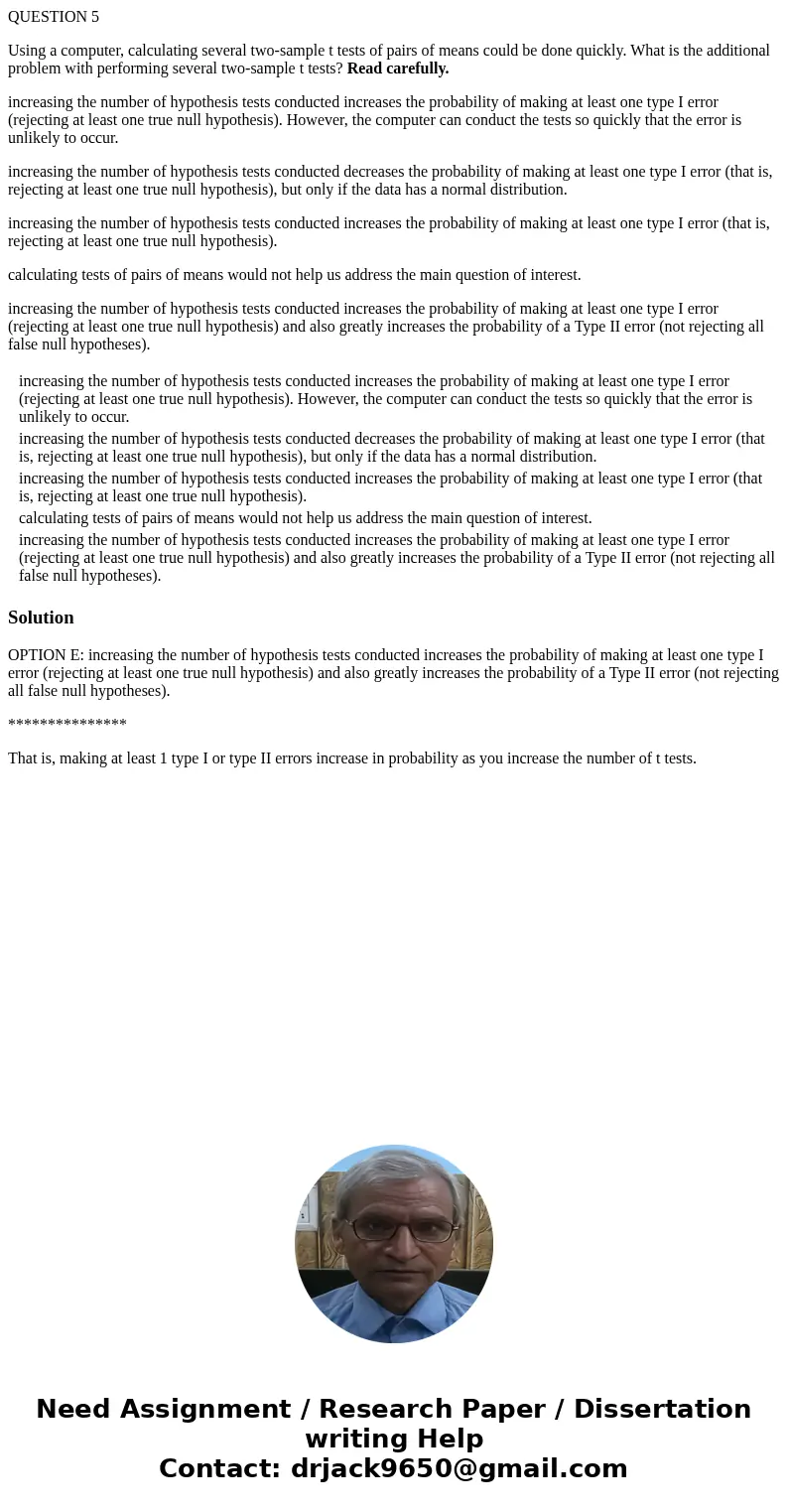QUESTION 5 Using a computer calculating several twosample t
QUESTION 5
Using a computer, calculating several two-sample t tests of pairs of means could be done quickly. What is the additional problem with performing several two-sample t tests? Read carefully.
increasing the number of hypothesis tests conducted increases the probability of making at least one type I error (rejecting at least one true null hypothesis). However, the computer can conduct the tests so quickly that the error is unlikely to occur.
increasing the number of hypothesis tests conducted decreases the probability of making at least one type I error (that is, rejecting at least one true null hypothesis), but only if the data has a normal distribution.
increasing the number of hypothesis tests conducted increases the probability of making at least one type I error (that is, rejecting at least one true null hypothesis).
calculating tests of pairs of means would not help us address the main question of interest.
increasing the number of hypothesis tests conducted increases the probability of making at least one type I error (rejecting at least one true null hypothesis) and also greatly increases the probability of a Type II error (not rejecting all false null hypotheses).
| increasing the number of hypothesis tests conducted increases the probability of making at least one type I error (rejecting at least one true null hypothesis). However, the computer can conduct the tests so quickly that the error is unlikely to occur. | ||
| increasing the number of hypothesis tests conducted decreases the probability of making at least one type I error (that is, rejecting at least one true null hypothesis), but only if the data has a normal distribution. | ||
| increasing the number of hypothesis tests conducted increases the probability of making at least one type I error (that is, rejecting at least one true null hypothesis). | ||
| calculating tests of pairs of means would not help us address the main question of interest. | ||
| increasing the number of hypothesis tests conducted increases the probability of making at least one type I error (rejecting at least one true null hypothesis) and also greatly increases the probability of a Type II error (not rejecting all false null hypotheses). |
Solution
OPTION E: increasing the number of hypothesis tests conducted increases the probability of making at least one type I error (rejecting at least one true null hypothesis) and also greatly increases the probability of a Type II error (not rejecting all false null hypotheses).
***************
That is, making at least 1 type I or type II errors increase in probability as you increase the number of t tests.

 Homework Sourse
Homework Sourse